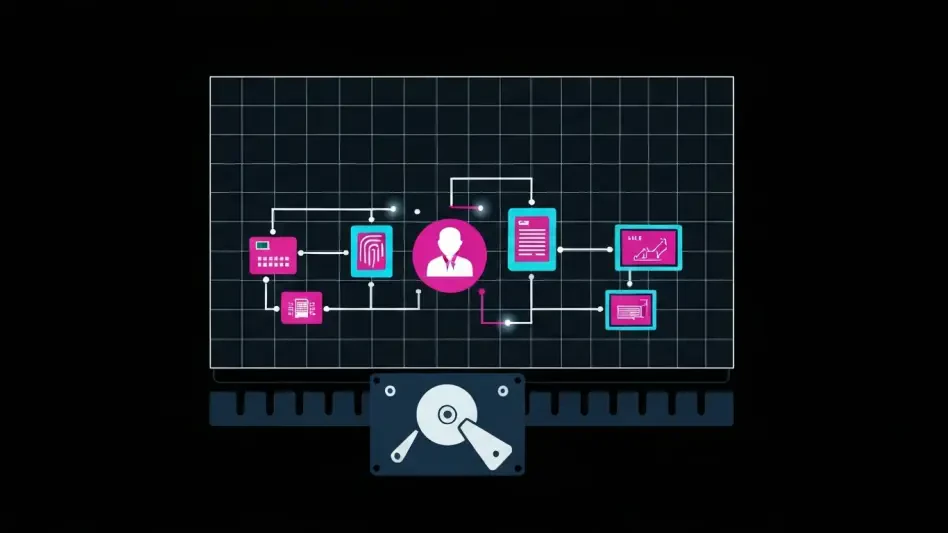In an era where digital ecosystems are increasingly interconnected, the security of third-party integrations has become a critical concern for businesses worldwide, as evidenced by a recent incident involving a prominent internet infrastructure and security company. Cloudflare, a leader in this space, has confirmed a significant data breach stemming from a supply chain attack linked to its Salesforce environment through a chatbot integration. This breach, affecting not only Cloudflare but hundreds of organizations globally, has exposed sensitive customer support data, raising urgent questions about the vulnerabilities inherent in relying on external platforms. The incident serves as a stark reminder of the sophisticated tactics employed by cybercriminals and the pressing need for robust oversight in an ever-evolving threat landscape. As details emerge, the focus shifts to understanding the scope of the breach, the response measures taken, and the broader implications for cybersecurity practices across industries.
Unpacking the Breach Details
Scope and Impact of the Incident
The core of this cybersecurity incident lies in a supply chain attack exploiting stolen OAuth tokens within a chatbot integration tied to Salesforce, specifically through the Salesloft Drift platform. This breach allowed unauthorized access to Cloudflare’s Salesforce environment, where attackers extracted customer support case data. The compromised information included support tickets containing contact details, subject lines, and correspondence, with some text fields revealing sensitive logs, configuration details, and even credentials shared during troubleshooting. Fortunately, no attachments were accessed, and Cloudflare swiftly identified and rotated 104 valid API tokens found in the stolen data, reporting no suspicious activity linked to them. Affected customers received direct notifications about the exposure, highlighting the immediate impact on trust and data privacy. This incident underscores how even well-protected companies can fall victim to vulnerabilities in third-party tools, exposing critical information through seemingly innocuous integrations.
Beyond Cloudflare, the scale of this attack is staggering, with hundreds of organizations worldwide also impacted due to their use of Salesforce through the same integration. High-profile companies across various sectors faced similar exposures, amplifying the severity of the breach. The stolen data, while not compromising core systems or infrastructure, poses significant risks for follow-up attacks such as targeted phishing or credential abuse. The attackers, identified by Cloudflare as a sophisticated threat group, spent nearly a week conducting reconnaissance before extracting data via the Salesforce Bulk API. This prolonged access demonstrates the patience and precision of modern cyber threats, where initial breaches are often just the first step in a larger campaign. The incident reveals the cascading effects of supply chain vulnerabilities, where a single weak link can jeopardize an entire network of interconnected businesses, necessitating a reevaluation of how such integrations are secured and monitored.
Nature of the Exploited Vulnerability
At the heart of this breach is the vulnerability introduced by third-party SaaS integrations, a growing concern in today’s digital landscape. Platforms like Salesforce, widely adopted for their efficiency and scalability, often rely on external tools for enhanced functionality, such as chatbots or automation services. However, these integrations can become entry points for attackers if not properly secured. In this case, stolen OAuth tokens provided the gateway for unauthorized access, allowing cybercriminals to bypass traditional defenses and infiltrate Cloudflare’s environment. This method of attack highlights a critical gap in cybersecurity: the assumption that third-party vendors maintain the same level of security as primary systems. The reality is that attackers frequently target these less secure endpoints to gain a foothold into larger, more fortified networks, exploiting trust in interconnected systems.
The broader implications of this vulnerability extend to the cybersecurity community’s understanding of supply chain risks. As organizations increasingly depend on a web of external services, the attack surface expands, creating opportunities for threat actors to exploit misconfigurations or lax security practices. This incident is part of a larger trend where supply chain attacks have become a preferred tactic for cybercriminals seeking high-value targets. The consensus among experts is that businesses must prioritize visibility into their third-party integrations, ensuring that every connection point is subject to rigorous security standards. Without such measures, the interconnected nature of modern digital ecosystems can transform a minor breach into a widespread crisis, affecting not just individual companies but entire industries. This breach serves as a call to action for tighter controls and proactive risk management in SaaS environments.
Response and Industry Implications
Cloudflare’s Mitigation Strategies
In the wake of the breach, Cloudflare demonstrated a swift and decisive response to contain the damage and prevent further exploitation. The company terminated the compromised Salesloft integration, purged related software and browser extensions, and revoked all associated OAuth tokens. Additionally, credential rotations were extended across other third-party services to mitigate potential risks. Enhanced monitoring protocols were implemented, alongside new policies for credential rotation and stricter security measures for re-onboarding integrations. Cloudflare’s transparency in disclosing the incident, coupled with a public apology to affected customers, has been widely praised by cybersecurity experts. This level of accountability, combined with immediate remediation efforts, sets a benchmark for how organizations should handle supply chain compromises, emphasizing the importance of rapid action and clear communication in maintaining trust.
The response also included proactive steps to safeguard against future threats, such as strengthening the security of SaaS environments and refining toolchain oversight. Experts have noted that Cloudflare’s handling of the situation reflects a commitment to learning from the incident and improving internal practices. By accepting responsibility for the choice of tools and integrations, the company has shown leadership in an area where many might deflect blame onto third-party vendors. This approach not only addresses the immediate fallout but also positions Cloudflare as a model for incident response in the industry. The focus on enhancing security frameworks and sharing insights from the breach offers valuable lessons for other organizations grappling with similar risks, encouraging a culture of continuous improvement and vigilance in the face of evolving cyber threats.
Broader Lessons for Cybersecurity
This incident illuminated the pervasive risks associated with third-party integrations, a challenge that extends far beyond any single company. The interconnectedness of digital ecosystems means that vulnerabilities in one area can have ripple effects across multiple organizations, as seen in the widespread impact of this supply chain attack. The consensus among industry observers is that stronger security practices are essential, including regular audits of third-party services and proactive credential management. Companies must adopt a zero-trust approach, verifying the security of every integration rather than assuming vendor reliability. This breach has sparked discussions about the need for standardized protocols to assess and monitor external tools, ensuring that no link in the supply chain remains a weak point for exploitation.
Looking ahead, the industry must prioritize collaborative efforts to address these systemic risks, with a focus on developing more resilient cybersecurity frameworks. Cloudflare’s commitment to bolstering its security measures reflects a broader push for accountability and innovation in protecting digital environments. The incident serves as a reminder that cybersecurity is not a static field but a dynamic battleground requiring constant adaptation. As threat actors continue to refine their tactics, organizations must invest in advanced threat detection, employee training, and robust partnerships with vendors to close security gaps. Reflecting on the response to this breach, it’s clear that transparency and swift action played a crucial role in mitigating damage, offering a roadmap for others to follow in fortifying their defenses against the ever-present threat of supply chain attacks.








